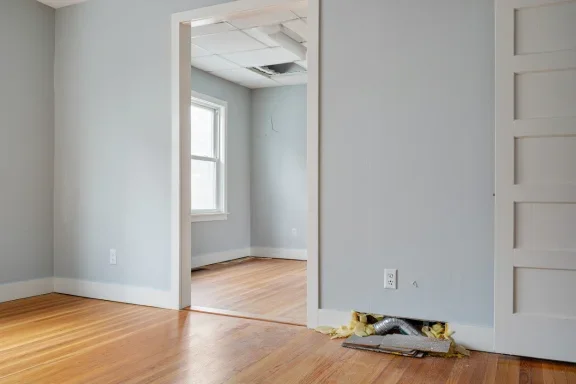How to improve indoor air quality in your home

Your home may feel comfortable, but is it hiding invisible health risks? That’s a question worth asking. In this comprehensive guide, we’ll walk you through the key signs of a healthy home and show you a proven way to improve your indoor environment. Take the first step toward a cleaner, healthier space by improving the air quality inside your home.
Key signs of a healthy home
A healthy home stands out thanks to a few essential features. First, proper ventilation ensures a steady exchange of indoor and outdoor air, helping remove pollutants and preventing stale air from building up. The absence of visible mould on walls, ceilings or in damp corners is another reliable indicator of a healthy indoor environment.
Indoor air pollution plays a crucial role in the overall health of your living space. Clean air — free of unpleasant or irritating odours — is a strong sign your air in your home is in good shape. In addition, keeping your home free of pests like insects or rodents significantly reduces health risks.
Finally, well-regulated humidity, ideally between 30% and 50%, helps prevent condensation and keeps the air comfortable. Together, these signs suggest your home offers a healthy and balanced environment for everyday living.
How to assess indoor air quality at home
If you want to improve indoor air quality in your home, you need to start by tracking a few key indicators. CO₂ levels, VOCs (volatile organic compounds), and fine particulate matter are all important measures of air quality in a home.
Specialized sensors and monitors can help detect the presence of these pollutants. High CO₂ levels often indicate poor ventilation, while VOCs may contribute to poor air from cleaning products, furniture, or building materials.
Testing is especially important during winter, when most homes are sealed up to retain heat, limiting air exchange with the outdoors. That’s why an effective ventilation system is key to maintaining clean indoor air and helping to clean the air throughout the year.
Spotting and preventing mould in your home

Early detection of mould is essential if you want to keep your home healthy. Inspect high-risk areas like the bathroom, basement, and dark bedroom corners on a regular basis. Musty odours, damp surfaces or dark spots on walls are all signs of a potential mould problem.
To prevent mould from forming, keep humidity under control and make sure air flows freely throughout the house. Use dehumidifiers as needed, and don’t forget to ventilate after showers or when cooking.
If you do spot mould, take action right away. Small patches can be cleaned with a mix of water and white vinegar. For larger or stubborn areas, it’s best to call in professionals to avoid potential health issues caused by long-term exposure.
Why mould is a health hazard?
Mould poses a serious health risk, particularly to the respiratory system. It can trigger asthma attacks, worsen existing allergies, and even lead to lung infections in vulnerable individuals.
People living in mould-contaminated homes may experience frequent headaches, skin or eye irritation, and chronic fatigue. These symptoms are often overlooked but can significantly affect quality of life and overall well-being.
One effective way to improve air quality and reduce mould impact is by using an air purifier, especially in closed spaces with limited airflow.
Outdoor noise sources to watch for
Noise from outside your home can seriously impact your comfort. Heavy traffic, passing trains, and nearby industrial activity are all potential sources of disruptive sound.
These disturbances aren’t just irritating — over time, they can lead to sleep disorders, stress, and even cardiovascular issues. That’s why it’s important to evaluate your home’s sound insulation and consider improvements if needed.
How to detect the presence of toxic materials

Toxic materials inside the home can pose serious health risks. Asbestos, lead, and other common pollutants may still be present in older building materials, especially in homes built several decades ago.
To identify them, professional sampling and lab testing are usually required. If you suspect the presence of hazardous substances, contact qualified experts for a thorough inspection.
Radon, a naturally occurring radioactive gas, also deserves close attention. This odourless gas can seep into homes and increase the risk of lung cancer. Specific testing kits are available to detect its presence and help you take action to safeguard your family’s health.
Maintaining a healthy home environment requires ongoing attention and targeted prevention. By monitoring your indoor air quality, controlling humidity levels, and checking for harmful substances, you play an active role in protecting your health and that of your loved ones. A healthy home is the foundation of a balanced lifestyle.